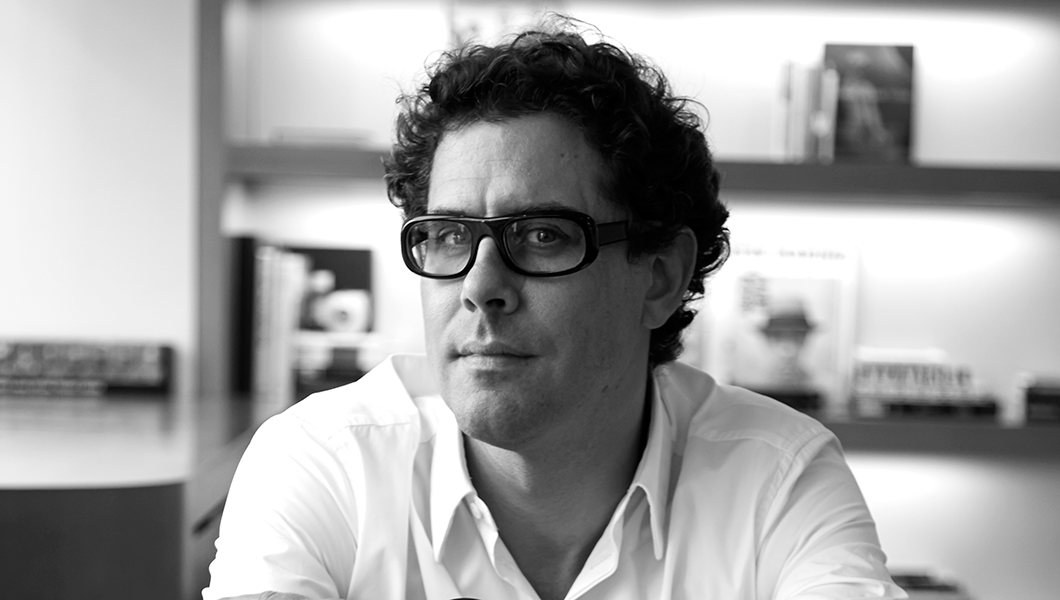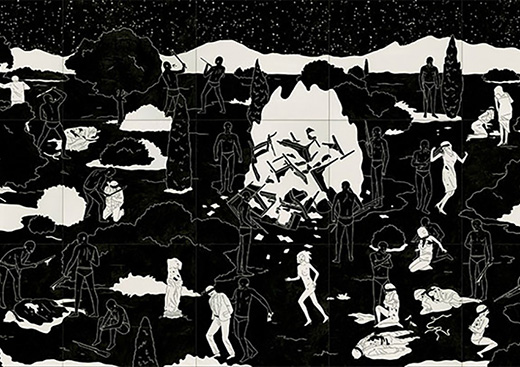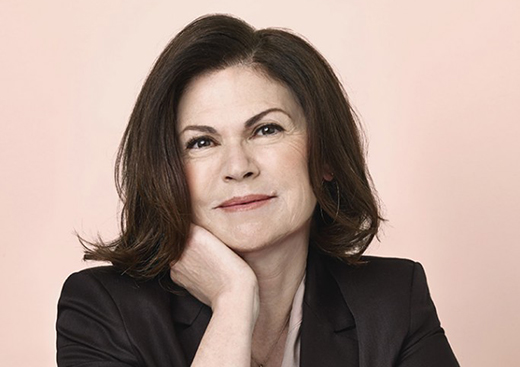It depends on the day, but most mornings see Sebastian Suhl rise just after the sun, around 6:30 a.m. or so. His regime is typical of a man with much on his plate, a man who must keep his body as fit as his mind. So he exercises, runs a little, and eats as healthy a breakfast as he can. When we speak, his wife and children are in Paris, set to join him soon in New York, but for now his days are all about work. By 8 a.m. he is at his desk, taking phone meetings, quietly guiding the fortunes of one of the greatest names in contemporary American fashion: Marc Jacobs.
Former CEO of Givenchy, with prior senior positions at Courrèges, Prada and Miu Miu, Suhl joined Marc Jacobs in September 2014, causing him to spend nearly a year separated from his family (wife, two daughters and a son from a previous marriage), who remained in Paris so as not to disrupt the children’s schooling, until they finally joined him in the fall of 2015. It’s the first time his children have lived in NYC—they were born in Hong Kong, moved to Europe and now are back to the place where Suhl was born and raised.
Washington Heights, specifically, is where Suhl grew up. A year after graduating from college he moved to Spain for six years, then Paris for nine, then Hong Kong, then back to Paris and Milan, followed by another stint in Paris and now, after half of his life spent being an American abroad, back to the place he knows best. “It’s full circle,” he says. “A big shift, but it’s coming home.”
The transition from old-world Parisian couture back to the new world has been interesting. Both Givenchy and Marc Jacobs are under the LVMH banner, but they’re completely different in terms of the working culture. “The Paris fashion scene has plenty of young designers but it’s dominated by these very large, established, historic couture houses. Here in the U.S., there’s a certain amount of freedom, which is true for New York in general. The can-do mentality is here, the sense that anything is possible.”
Now, not only is he working for a fashion house whose founder is still alive and well and steering the ship (unlike the couture houses in Paris whose originators are long since deceased), but he is in a New York quite different from the one he grew up in. “New York was a much more marginal place, seedy in spite of being a world center,” says Suhl. “Now I feel like the city has become friendlier, warmer and cleaner, and there aren’t the same constant concerns about safety. Of course, huge neighborhoods have shifted. What used to be trendy and artsy is now mostly expensive. It’s a funny thing coming back to a city that is sort of the same and sort of different.”
His job requires a deft, almost clairvoyant understanding of the fashion business, whose fickle ebbs and flows are notoriously tricky to predict. It also requires an appreciation for the creative side, as he carefully executes the designers’ vision with the demands of a global marketplace in mind. Left brain and right brain working at full throttle each day means that Suhl, perhaps more than most, relishes the moments when he can disengage. Sometimes he walks around, marveling at how his city has changed: “The whole park on the Westside on the river didn’t even exist before.” Or he indulges in what New York does best—food. An off-the-radar Japanese spot called Bohemian, or Kyoya in the Village, are his favorite places to unwind and contemplate the energy of New York, and his new life. “Young New York designers have an acute sensitivity and respect for the business,” he says. “There’s a strong entrepreneurial approach here.” An approach embodied by his creative director, Mr. Marc Jacobs.
Marc Jacobs founded his namesake label 30 years ago, launching a brand that stood apart from others in America, displaying a very international and in some ways European sensibility. Jacobs has always been the creative director of Marc Jacobs and was simultaneously the creative director of Louis Vuitton until a year ago. He’s still “a very young, dynamic designer,” says Suhl, adding, “Marc is intrinsically involved and creatively directing everything. He is at the heart of all that, as the creative engine.” Since Suhl’s arrival, it was decided that the two MJ brands—the luxury brand Marc Jacobs and its more affordable sibling, Marc by Marc Jacobs—are going to be streamlined into one brand, offering designer products at a “contemporary” price point with some luxury. “That’s really a very powerful thing,” says Suhl. “This high and low mix, which is really rare, and our very modern philosophy.” It’s too soon to say what Suhl’s legacy will be at Marc Jacobs, but this surely will be part of the story, as Suhl guides the brand through new waters.
In more than 20 years in the business, Suhl has seen the world become smaller and smaller, as designers have to think about their market not in terms of a small elite group of Western buyers but a consumer base in varying income brackets that spans the planet. More than half of Marc Jacobs’ business comes from outside the U.S., for example. “I think that Marc represents something of a shift that is happening in American fashion. American designers are looking more and more to what’s happening abroad.”
That may be the case, but for Suhl, after so many years in foreign lands, he’s happy to be home, helming a quintessentially American brand, whose founders are still alive and kicking. “It’s a great privilege to be exposed to that,” says Suhl. “All fashion houses originally were born thanks to great creative entrepreneurs, even the oldest and most venerable of French couture houses. Here, you can get a glimpse of what that looks like in real time—how they continue to create a culture and an energy that makes a brand what it is.”
—





